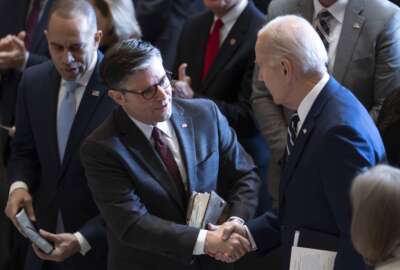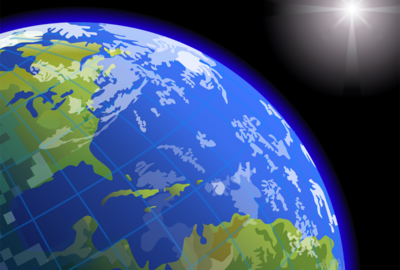How to do foreign aid without stepping on federal toes
A large non-profit has been obtaining Tesla battery packs and getting them into Ukraine for when Russia knocks out the electricity.
A large non-profit has been obtaining Tesla battery packs and getting them into Ukraine for when Russia knocks out the electricity. The Federal Drive with Tom Temin was curious about how an operation like that works. How does it maneuver around military operations and stay on the good side of the State Department and other agencies that may be operating there? For more, Tom spoke with the President and CEO of Direct Relief, Thomas Tighe.
Interview Transcript:
Thomas Tighe Direct relief is providing a lot of medical material aid to Ukraine, but the most recent activity has been a significant investment of over 2000 battery systems to backstop the Ukrainian health system. That was their priority. And, you know, like any health system, when the power goes out, it’s unable to function and perform the basic services. And that was a priority. So, it was what Direct Relief stepped up to and has done this month, I think is said we continued over $1 billion of medical material aid since the war began. This power issue has become an emergent crisis, really, for the Ukrainian health care system as they’re deep into the war now.
Tom Temin And maybe give us a little bit of background on the organization itself. Direct Relief.
Thomas Tighe Well, Direct Relief is a nonprofit humanitarian health care organization that works in all 50 U.S. states and about 100 countries each year. Its principal focus is to provide medical material, medications, vaccines, medical supplies that are needed but can’t be afforded for the people who need them. So that’s the typical role that Direct Relief has played for 75 years. We’re secular, entirely privately financed and an apolitical organization. So, it’s just purely a humanitarian health care organization. And Ukraine has been the largest single effort that we’ve undertaken in 75 years, just because of the need and the proximity to Europe, where we’re set up and have been able to provide a lot. But this entry into the power sector, at least for health, is something that’s relatively new for Direct Relief. We see it much more typically in the aftermath of an emergency natural disaster like Hurricane Maria, but increasingly we’re all becoming more dependent on power for the medical devices, either at home or in a facility. While power is becoming less reliable, more frequent outages often brought about by climate issues. But for Ukraine, obviously brought about by a different cause but same effect on health.
Tom Temin And when you are maneuvering, say, to get these devices, these battery packs into places like Ukraine. Let’s talk about on the civilian side and really on the work around the world. How do you maneuver around, say, USAID or official organs, governmental organs that are trying to help out their State Department?
Thomas Tighe Yeah, we’ve been very careful. We, you know, always notify the State Department, the embassy in whatever country we’re working in. As a courtesy, just to make sure that they’re aware of what direct relief is doing. It’s often filling a gap that cannot be filled by either the private marketplace or by any government. But as an American organization, we think it’s important to make sure that the American policymakers are aware of what we’re doing. It’s no desire to do anything offline. It’s just we don’t receive government funding, but we work very closely and in coordination with. And if we get a signal that it’s not needed or otherwise complicating, you know, we certainly take that under close advisement. But it’s a coordinated effort. There’s a lot of actors in Ukraine, both Ukrainian and international, at the government non-governmental level, but we do everything we can to make sure that we’re coordinating as best we can with from the UN agencies to the U.S. government agencies everywhere.
Tom Temin And when you are operating, let’s say maybe not necessarily Ukraine, but somewhere where USAID might be having projects or many years ago, you work for the Peace Corps and where they might be having projects, are they able to give you signals to say, well, we’re doing this in this, but if you did that, batteries say that would really help. Do you get those kinds of signals from federal agencies?
Thomas Tighe Yeah, I mean, I think the Peace Corps had during Covid, I think they had to withdraw all the volunteers from around the world. So that was for the first time ever. So that wasn’t a source of information. But in general, you’re right. I think the US government has a big footprint, very skilled, talented people who are living and experts in the country. So, I think it’s always a source of good information, and we do our best. I think, you know, anywhere that we’re working, just to make sure that the embassy knows about what Direct Relief efforts are, if there’s an event or something, typically a US government official will be there. I mean, Ambassador Brzezinski in Poland has been terrifically both helpful and supportive of efforts to assist refugees in Poland. So, we meet with him when we’re over there and he’s come to events, about Direct Relief activities in Poland. So, we find it a great source of I mean, it’s just it’s a different role. I think, you know, we as a private nonprofit, we have to maintain some distance in that. Independence is important for a variety of reasons. Just so there’s no confusion primarily. But I think we do everything we can to make sure it’s a coordinated effort, including. With the U.N. agencies, which the embassy obviously does as well.
Tom Temin We’re speaking with Thomas Tighe. He’s CEO and president of Direct Relief. And what about the military side? Say you’re trying to get, again, these battery power sources, and these are big, right? These are like the size of a telephone booth. I’m imagining each individual Tesla battery pack. What about the military considerations and working around them. Because especially in Ukraine, you never know where action could happen.
Thomas Tighe Right. I think, you know, as a humanitarian group, we have to keep kind of a clear distance. So, there’s no confusion about what our role is. So, we’re not supporting the warfighting capabilities of Ukraine. And that’s consistent with our humanitarian character. But obviously it is a war. I think we’ve worked closely, primarily with the Ukrainians, to make sure that they’re safely and securely delivered. So, they’re not targeted. So, you know, we didn’t make the announcement until the after they were securely in Ukraine. But obviously, I think they’re in touch with whoever they need to be at the, at the military side. But we are not invited to those meetings and, we probably wouldn’t go. And everyone understands that humanitarian groups from a security perspective need to know where the risks are and so as to not put anyone in harm’s way, but not to get too closely involved with the coordinating efforts. Because that’s really crosses a line that can be compromising to the perceived role of particularly a private NGO. So, I think, again, it’s a lot of coordination and disclosure on our part, and attempting to make sure everyone knows, but staying clear and not expecting to be involved in anything that involves the military strategy or the campaign itself.
Tom Temin So that means in many cases, your people might be at greater danger than they would be otherwise if they were operating under the auspices of military protection.
Thomas Tighe Yes and no. I mean, sometimes even with the Peace Corps, if you’re perceived as a member of the armed forces in a in an active military campaign, you’re targeted if you’re an innocent civilian just doing good work. I mean, you might be, but, you know, from a strategic perspective, it’s not particularly advantageous to go killing a bunch of people they’re trying to help, even from the public posture. No one does that intentionally. Right. But it’s an important issue that we worry about or concerned with. Check in with the embassy, certainly before we send anyone there, as any visiting American does in Ukraine. And there are a lot of them who travel. But in terms of security, we’re not kind of protected other than by the Ukrainian security that’s arranged or going by typically the ministries of health or social welfare or whatever it might be, but it’s a bit of a different role when you’re there, you know, carrying a an official passport from the U.S. government representing the government of the United States, as opposed to being there in a private capacity, representing an organization. But we’re still American, and we definitely, you know, check in and disclose what we’re doing. And in Ukraine, for example, sometimes the USAID funding has ceased, and we have picked up some of the activities that USAID had been funding for the government of Ukraine just because of the timing of the appropriations or whatever the hang up may be. So, it’s loosely coordinated but not officially coordinated, as is the case with the many nonprofits receive financial support from the US government through USAID. Direct Relief, just for historical reasons, has always been privately funded.
Tom Temin Sure. And just a technical question. If you’re delivering battery backups, you know, for health care facilities and hospitals, how do they get charged? Because a battery needs to be charged to be able to discharge. And if the power’s out, what happens?
Thomas Tighe Well, the idea is to charge it when you do have power. So, it’s available when the power goes out. So, they use nuclear power. And in Ukraine I think when it’s available that’s when you charge the battery. So, it’s available in places where we’re looking at adding a lot of solar, which we’ve done in a lot of places around the world. So typically, you know, our facility in California is 150,000ft² in runs on a solar microgrid. So, during the day, the batteries charge up while the sun’s out and we’re generating our own energy, feeding some back to the grid. And when the sun goes down, we can draw down on the batteries. And depending on the climate and the sun availability, which in Ukraine is great during the summer there’s long days, of sunlight. It’s very bad during the winter, but there’s enough to charge the batteries somewhat, but really depends on the climate. So, it can be charged from any source. But the idea is to have the battery there for resiliency when the power goes out, often from a weather event. But actually, Ukraine is from the grid being targeted by the Russians, which is again a much different cause than a hurricane in the Caribbean but has the same effect on really screwing up the delivery of health care systems for people who rely on them.
Copyright © 2024 Federal News Network. All rights reserved. This website is not intended for users located within the European Economic Area.
Tom Temin is host of the Federal Drive and has been providing insight on federal technology and management issues for more than 30 years.
Follow @tteminWFED





